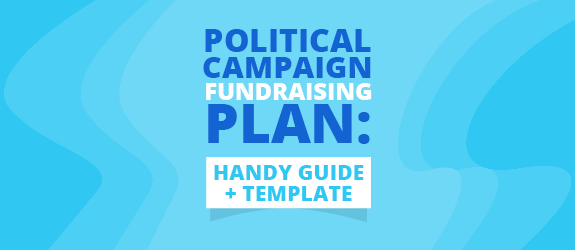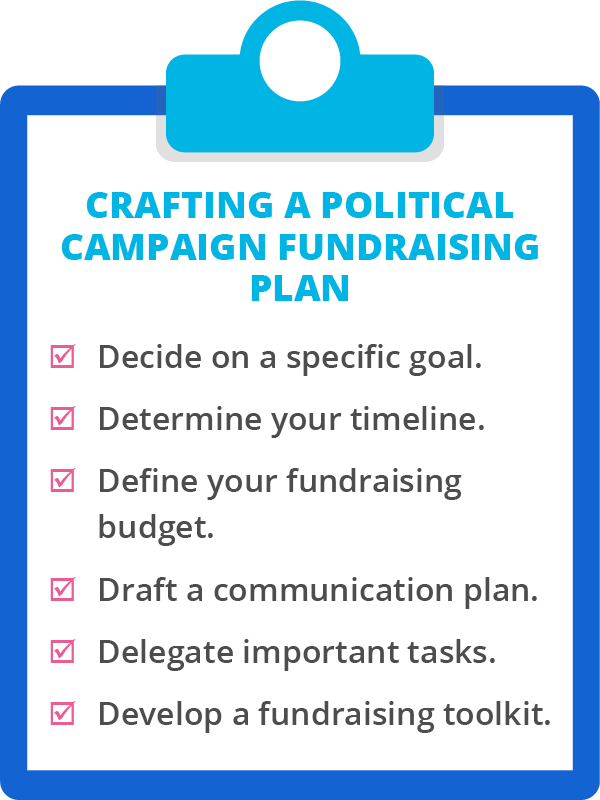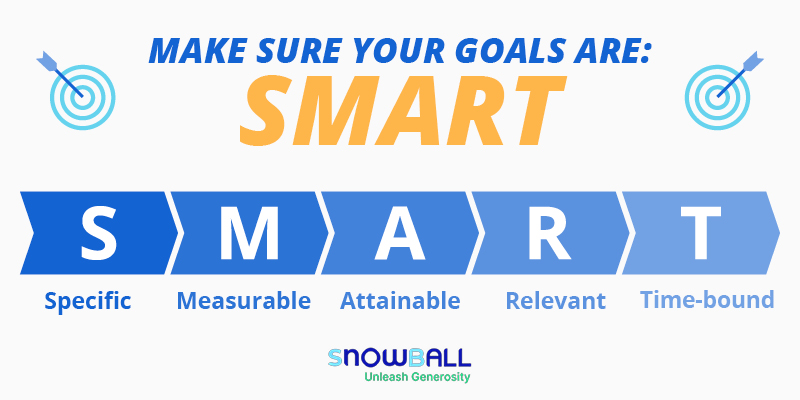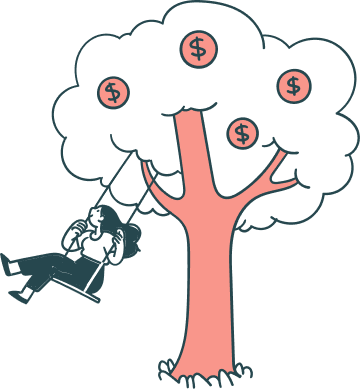Any successful fundraising campaign starts with a detailed and actionable fundraising plan. Political fundraisers are no different! That’s why it’s crucial that if you’re looking to plan and host a fundraiser for your upcoming political campaign, the first step is ensuring you have a comprehensive political campaign fundraising plan.
A fundraising plan contains pertinent information relating to your forthcoming campaign and functions as a guide to keep your entire team on track toward a common goal.
Luckily, here at Snowball, we know all about reaching fundraising goals in the most effective ways possible. Through our years of fundraising experience and assisting individuals, groups, and organizations to bring in the funding they need, we know how to help you too. And we understand that the process can seem overwhelming at first!
That’s why we’ve put together this informational guide to help prepare you for a successful political campaign. Here, we’ll cover the following key topics:
Feel free to skip around to the sections that interest you most—though we recommend reading along from the top to make sure you get everything you need to know.
Now, are you ready to learn more about enacting your own political campaign fundraising plan? Let’s jump right in.[boc_spacing height=”1px”]
Political Fundraising: Frequently Asked Questions
Whether this is your first-ever political campaign, or you’re working with a group of highly experienced fundraising pros, you likely have a few unanswered questions about the whole process. We’re here to provide you with the context you need:
How do political campaigns raise money?
Political campaigns raise money in largely the same way any fundraiser does—by appealing to audience connections and utilizing the right tools to draw in donations. In the case of political fundraisers, support is often drawn from local individuals who would like to see that candidate be elected a political official.
Then, the next step involves determining which fundraising ideas will work best with your particular network of support. For example, if your typical campaign donor is a Baby Boomer, studies show that they’re more likely to be inspired to give by an email campaign. A Millennial, on the other hand, might be more affected by social media marketing.
How do you plan a fundraising campaign?
Any fundraising campaign begins with research—which means you’re already on the right track!
More specifically, it’s important that you take your overarching goals, approximate timeline, budgetary restraints, communication strategy, delegation plan, and fundraising toolkit into consideration. That can seem like a lot, so we’ll go over each component in greater detail below.
Why is a political campaign fundraising plan important?
A political campaign fundraising plan is crucial for effectively managing your fundraisers from start to finish. With so many moving pieces to juggle while managing a political fundraising campaign, it can be hard to keep track of everything. Your fundraising plan works to keep your team on the same page as you document the entire fundraising process.
And if you do happen to get off track, you’ll have a comprehensive record to look back on and direct you as you shift your course.
How do you find political campaign donors?
Finding political campaign donors can be as simple as knocking on your neighbors’ doors or as involved as conducting in-depth research on prospective donors.
A major reason for the wide range depends on the size of the contributions you’re seeking. For example, while you might be able to collect a $20 bill from the guy down the street (which is appreciated, of course!), you’re not likely to be gifted a couple of thousand dollars that way. If you’re looking to reel in major donations like that, it’s a good idea to implement wealth screening for prospective donors before investing a ton of time and resources into a major gift strategy.
However, the biggest thing to keep in mind is that for local political campaigns, the vast majority of your donors will reside within the geographical limits of the election.
What are some helpful resources for political fundraising?
There are tons of available resources for political fundraising, ranging from educational guides (like this one) to provide you with valuable insights and strengthen your campaigns, to top-of-the-line software to help you actually collect the funds.
Helpful resources may include volunteer management tools, marketing and outreach software, and an online donation platform. Additionally, one of the most valuable resources that you can get is a carefully-crafted fundraising plan template. And lucky for you, we include one for free within this guide![boc_spacing height=”1px”]
Crafting a Political Campaign Fundraising Plan
Crafting your political campaign fundraising plan can be a big task. Luckily, the process can be further broken down into six simplified and actionable steps. Let’s walk through the main facets here:
1. Decide on a specific goal.
Determine how much funding it will take to run an effective political campaign, and then use that information as a basis for your fundraising goals. For example, if you estimate that it will cost you $40,000 to campaign and win the upcoming election, set that as your goal.
As a general note, the best fundraising goals (or any goals, actually) should be SMART:
-
- Specific: Make sure your written fundraising goal describes a specific variable. That way, you know exactly what it is that you’re looking for, and exactly what it is that constitutes success.
- Measurable: Numbers, percentages, and other quantifiable data are crucial for quality fundraising goals. That’s because they remove any sense of uncertainty around whether or not you’ve reached your goal. For example, while raising “enough” funds for your campaign is subjective, “raising $40,000” is much more easily measured objectively.
- Attainable: Goals should be lofty to motivate your team to raise more, but realistic at the same time. Goals that are too impractical can actually cause fundraising fatigue and lead to a “why even try?” attitude—which is the exact opposite of what your strategic goals should be doing.
- Relevant: Make sure your fundraising goal is relevant to your fundraising. While winning the election is certainly a nice goal to have, it’s not quite what you should be going for in this scenario. Instead, focus on fundraising-specific KPIs (or key performance indicators) such as fundraising revenue collected or even the number of new donors.
- Time-bound: Make sure you set a specific date by which you plan to have reached your goal. We’ll dive deeper into setting an effective fundraising timeline below, but sticking to an accurate deadline is essential for motivating donors and fundraisers alike.
By following these goal-setting guidelines, you ensure that your entire team is on the same page and working toward the same overall target. Plus, a top-notch goal can be a fantastic way to motivate both donors and fundraisers alike.
Not to mention, your fundraising goal will essentially function as the foundation from which you build the rest of your political campaign fundraising plan.
2. Determine your timeline.
Your political campaign fundraising timeline should vary depending on two key factors—the date of the upcoming election and the scale of the campaign.
For example, while a presidential campaign might require fundraising efforts to begin several years ahead of time, a smaller local campaign for mayor or city council will likely begin closer to election day.
Generally speaking, there are three significant stages within a political campaign fundraising plan:
-
- More than 1 year prior to the election: This is the time when you may begin your fundraising research and start compiling your knowledge into a handy fundraising plan.
- Approximately 1 year before the election: This stage is where the bulk of your fundraising efforts will fall. You should already have a strategic political campaign fundraising plan in place, and now is the time to put that plan into action.
- Several months leading up to the election: At this point, you should likely be dialing back your fundraising efforts and focusing instead on successful political campaigning. That means that more than likely, you should have already hit your fundraising goal!
That being said, it’s a good idea to start building out your fundraising timeline by determining the date of the upcoming election. Then, begin working backward to fill out the remainder of your fundraising calendar, ensuring you give yourself enough time to raise the money you need to run for office.
3. Define your fundraising budget.
Any fundraising budget is all about the relationship between your expenses and your revenue.
Your expenses are the money you spend upfront to raise more for your campaign—whether that’s your staff salaries, event-specific costs such as venue and catering fees, or your online fundraising toolkit.
Then, your revenue is the money you raise. Depending on the specific fundraising tactics you choose, that might include event ticketing costs, text-to-give revenue, and online donations.
Finally, you can calculate your fundraising profitability by subtracting your expenses from your revenue.
As a general rule, you should expect to spend about 10-15% of your overall fundraising goal in order to set your team up for success. So, going back to your theoretical $40,000 fundraising goal, you might spend between $4,000-$5,000 in overhead and fundraising costs.
Of course, the fundraisers with the highest ROI, or return on investment, are those that cost the least to run and bring in the most funding. And that’s what you should be aiming for on a larger scale! Luckily, there are free fundraising tools like Snowball that can help you to raise more on a limited budget.
4. Draft a communication plan.
Your communication plan is the key to building long-term relationships with dedicated supporters. That means it’s one of the most important aspects of your overall political campaign fundraising plan!
Here are a few tips to consider as you begin planning your fundraising communications:
-
- Emphasize your emotional appeal to donors. Successful fundraising, especially for political campaigns, is all about forming connections with your audience. Since many people are emotionally invested in their political ties, that’s a great way to get potential supporters’ attention and, hopefully, convince them to contribute to your campaign. For example, be sure to locate individuals with similar political beliefs as yourself, and emphasize that if they support X topics, they should also support your campaign!
- Personalize your fundraising approach. Especially in a local election, personalization is key for building relationships with supporters. When a fundraising appeal has been clearly individualized for each recipient, it’s more likely to have a greater impact on the individual than if you had used catch-all campaign tactics. For example, including a recipient’s name in an email subject line can lead to up to 50% higher open rates.
- Don’t forget to thank each and every supporter. This is crucial for any fundraising campaign, but if you’re not used to soliciting funds, it can be easy to neglect. However, showing your appreciation to donors is one of the greatest ways to build strong relationships and retain their support over time. Something as simple as an automated email thank-you message can suffice, although you might want to take the time to send a handwritten thank-you note via direct mail, or even thank significant donors over the phone.
As you adjust your marketing and outreach approaches to collect more fundraising revenue, it’s important to recognize the significance of an effective marketing tech stack. After all, strategic communication can be quite time-consuming without the right tools. But with top-notch software on hand, you can bring your outreach to the next level without having to invest a substantial amount of time and effort.
5. Delegate important tasks.
Your fundraising team is here to help you succeed, and effective delegation practices are important for any team that wants to work better collectively. With a fundraising team, that is absolutely crucial.
Keep these best practices in mind as you begin to assign tasks to individuals within your fundraising team:
-
- Assign a specific individual to take charge of each task. If a task is to be completed by a group of individuals, make sure to designate a leader who will run point on keeping everyone on track. This way, you can avoid the all-too-common problem of team members pointing to each other and claiming, “I thought you were going to do that.”
- Decide which tasks can be handled by volunteers. While you might not want to leave the biggest decisions up to well-meaning volunteers, there’s certainly a number of projects that your unpaid supporters will be willing and able to help out with. For example, you might assign a group of volunteers to assist the campaign by penning handwritten fundraising letters or making personal thank-you phone calls.
- Keep in touch with all team members throughout the process. Just assigning individuals to tasks is not enough. You then have to continue following up to ensure things are still going smoothly as planned. For example, it’s a good idea to check-in prior to an important deadline to make sure everything is on track. If not, it might be time to adjust your political campaign fundraising plan a bit.
Delegating specific tasks makes sure that everyone knows exactly what they’re responsible for to the overall team, as well as keeping too much responsibility from falling in the lap of one or two individuals.
6. Develop a fundraising toolkit.
Having a comprehensive fundraising toolkit is arguably the most important step in the entire fundraising process. That’s because it doesn’t matter how much thought you put into drafting the perfect goal or how great your appeals are if potential donors can’t figure out how to contribute to your campaign. And without a solid foundation of fundraising software to build from, you’ll be consistently losing supporters who don’t feel like jumping through complicated hoops to give.
We recommend that you start with:
-
- An optimized online donation page. An online donation page should be the foundation of any virtual fundraising campaign you run. That means it’s worth investing in the best! Top providers should ensure a quick and seamless donation experience on a visually appealing form branded to your own campaign and backed by highly-secure payment processing tools.
- Flexible mobile giving tools. Studies show that more than 50% of nonprofit web traffic comes from mobile devices as of 2019—and that number continues to grow. Be sure your fundraising tools place an emphasis on mobile giving by providing not only mobile-responsive donation pages but also text-to-give functionality!
- Event-specific fundraising platform. Many of our favorite political campaign fundraising ideas are events-based—whether virtual, in-person, or hybrid-style. That being said, make sure your fundraising software can sell tickets and handle registration with ease.
Many of these tools can be purchased separately, or “a la carte-style,” which is often a go-to strategy for beginning fundraisers. However, we suggest you invest in a powerful, all-in-one fundraising platform that can cater to your every fundraising need.
That way, you don’t have to worry about manually transferring data between systems, but instead are met with a fully integrated system. Plus, comprehensive platforms are more easily scalable and often end up the cost-efficient solution in the long run.
Political Campaign Fundraising Plan Template
Now we’ve discussed the main components of a successful political campaign fundraising plan—but it’s all still so theoretical. Here, we give you a practical tool for converting your big ideas into a detailed and accessible action plan.
Feel free to copy and paste this template to use for your own fundraising campaign!
FUNDRAISING GOAL
Remember to make sure your fundraising goal is SMART—specific, measurable, attainable, relevant, and time-bound.
To raise $_____________ in fundraising revenue through _________________ campaign(s) by [month] [date], [year].
CAMPAIGN TIMELINE
It’s important to keep your campaign timeline updated to ensure everyone stays on the same page.
DEADLINE TASK ASSIGNED TO [Date] [Brief description of task] [Team member] [Date] [Brief description of task] [Team member] [Date] [Brief description of task] [Team member] [Date] [Brief description of task] [Team member] [Date] [Brief description of task] [Team member] [Date] [Brief description of task] [Team member]
COMMUNICATION PLAN
Craft a basic overview of the marketing and outreach strategies you’ll implement to bring in donations.
MESSAGE CONTENT METHOD OF DELIVERY DATE [Summary of message] [Medium] [Date] [Summary of message] [Medium] [Date] [Summary of message] [Medium] [Date] [Summary of message] [Medium] [Date] [Summary of message] [Medium] [Date]
WORKING BUDGET
You have to spend money to make money—but keep your spending under control with a detailed fundraising budget.
EXPENSE CATEGORY BUDGETED EXPENSE ACTUAL EXPENSE [Expense 1] [$X.XX] [$X.XX] [Expense 2] [$X.XX] [$X.XX] [Expense 3] [$X.XX] [$X.XX] [Expense 4] [$X.XX] [$X.XX] [Expense 5] [$X.XX] [$X.XX] TOTALS [$X.XX] [$X.XX]
REVENUE CATEGORY EXPECTED REVENUE ACTUAL REVENUE [Source of revenue 1] [$X.XX] [$X.XX] [Source of revenue 2] [$X.XX] [$X.XX] [Source of revenue 3] [$X.XX] [$X.XX] [Source of revenue 4] [$X.XX] [$X.XX] [Source of revenue 5] [$X.XX] [$X.XX] TOTALS [$X.XX] [$X.XX] EXPECTED PROFIT
$[Expected Revenue] – $[Budgeted Expenses] = $[Profit]
ACTUAL PROFIT
$[Actual Revenue] – $[Actual Expenses] = $[Profit]
Political Campaign Fundraising Plan Sample
Here’s an example of a completed version of our political campaign fundraising plan template. Although the numbers do not reflect a real campaign, this should give you a better understanding of how to apply this guide to your own fundraisers:
FUNDRAISING GOAL
To raise $20,000 in fundraising revenue through an online donation page, virtual auction, and text-to-give campaigns by June 1, 2021.
CAMPAIGN TIMELINE
DEADLINE TASK ASSIGNED TO 10/01/2020 Create online donation page John Doe: Fundraising Director 10/15/2020 Set up text-to-give campaign Rita Mason: Fundraising Assistant 11/01/2020 Automate scheduled email blasts Oliver Newton: Marketing Coordinator 03/01/2021 Procure auction items Connor Marco: Community Outreach Specialist 04/15/2021 Publish auction catalog online Matthew McDonald: Project Manager 05/15/2021 Ship items to winners Jane Delgado: Lead Volunteer
COMMUNICATION PLAN
MESSAGE CONTENT METHOD OF DELIVERY DATE “Do you support Jane Doe for mayor? Help fund our campaign by texting DONATE to (123) 456 – 7890.” With graphic image. Social media (Facebook, Instagram, Twitter) 10/16/2020 Personalized request for donation letter, signed by Jane Doe Direct mail 10/24/2020 “Support Jane Doe’s run for mayor by donating to our online donation page here.” With link to online donation page. 11/01/2020 Campaign welcome packet/email newsletter 01/01/2021 Personal thank-you call to mid-sized and major donors Phone call 02/10/2021 New donor survey 03/12/2021
WORKING BUDGET
EXPENSE CATEGORY BUDGETED EXPENSE ACTUAL EXPENSE Marketing $1,000.00 $1,150.00 Auction item procurement $2,000.00 $1,756.00 Online donation page $0.00 $0.00 Text-to-give tools $549.00 $399.50 Virtual auction platform $549.00 $399.50 TOTALS $4,098.00 $3,705.00
REVENUE CATEGORY EXPECTED REVENUE ACTUAL REVENUE Online donations $4,000.00 $4,015.00 Mobile donations $5,000.00 $6,020.00 Auction ticket sales $1,000.00 $1,635.00 Auction bids $10,000.00 $13,302.00 TOTALS $20,000.00 $24,972.00 EXPECTED PROFIT
$20,000.00 – $4,098.00 = $15,902.00
ACTUAL PROFIT
$24,972.00 – $3,705.00 = $21,267.00
Hopefully, this guide has given you a closer look at what goes into creating a political campaign fundraising plan—and, even better, that you feel ready to prepare your own. With the right fundraising tools and a detailed agenda to follow, you should be all set to take on a fruitful campaign in no time. Good luck!
For more information on hosting a successful fundraiser, be sure to check out the following resources:
- 24+ Tried-and-True Political Campaign Fundraising Ideas. Are you looking for unique and effective political fundraising ideas? Be sure to browse this list of our favorites to get started.
- Virtual Fundraising: The Complete Guide for 2020 & Beyond. This year has demonstrated the vast importance of virtual fundraising strategies. Learn more with this comprehensive guide!
- Free Fundraising Software for Nonprofits: Top Providers. Top-notch fundraising software can get pricey—but it doesn’t have to. Check out our suggested providers of free and low-cost fundraising tools here.









